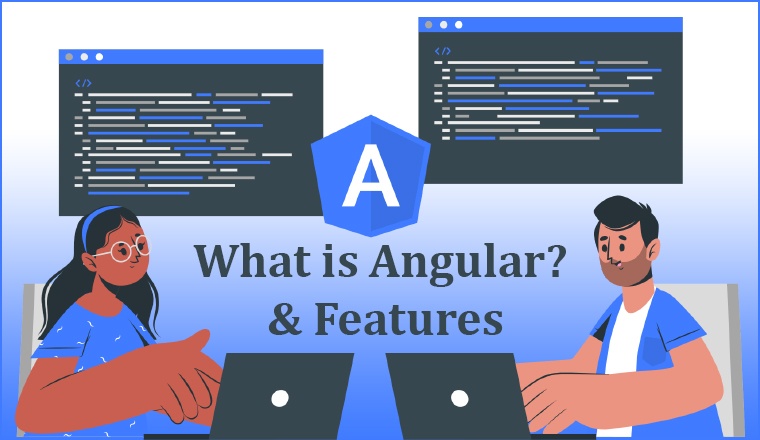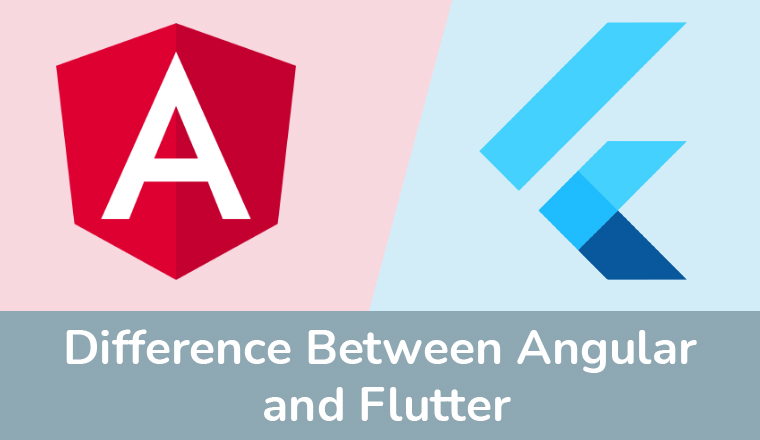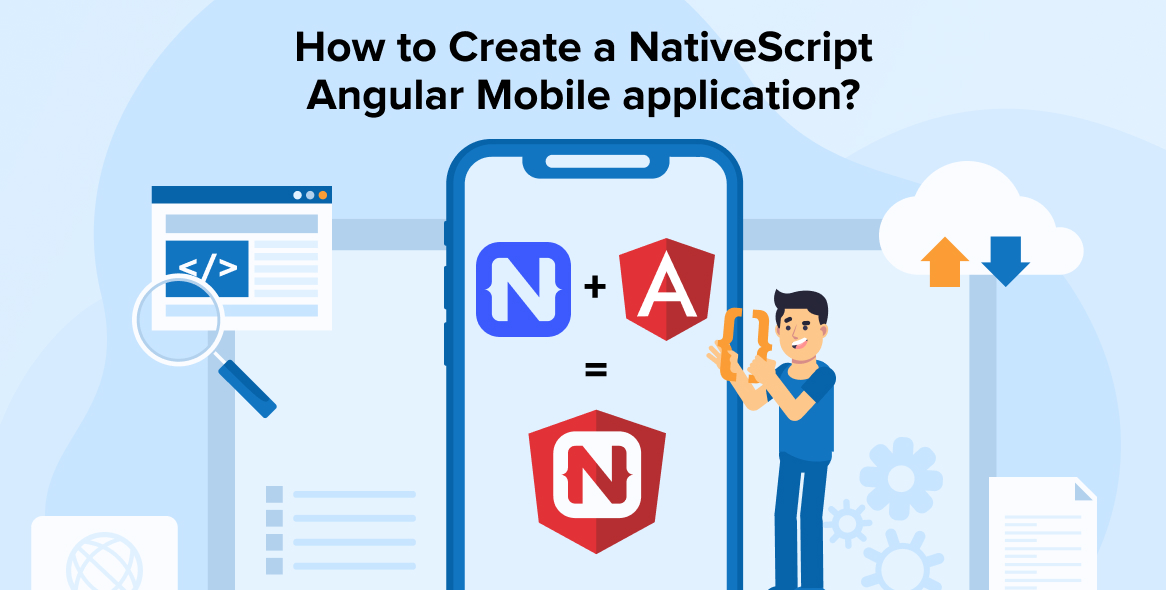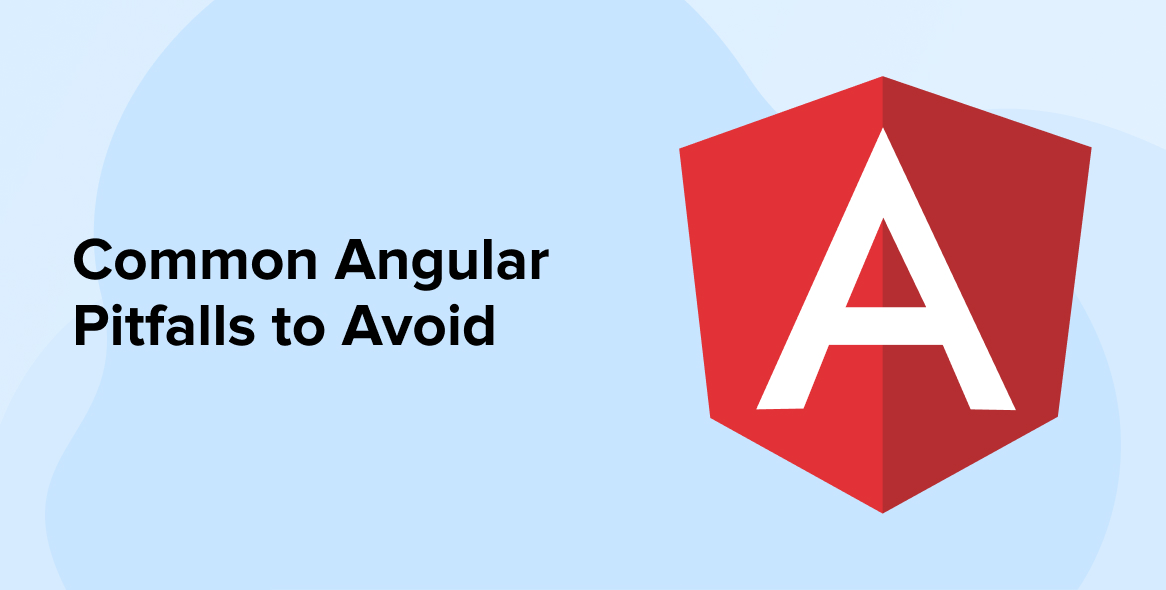
One of the biggest concerns of any web app developer while creating a web application or a website for the client is to choose the best cross-platform framework for that particular project. The reason behind it is that there are various renowned web application framework/s available in the market when it comes to web application development. This makes the choice tough for the mobile app development team. But the two most popular frameworks that are commonly used in recent times are Flutter and Angular. To make the right choice between them, the developer needs to understand the difference between Flutter vs Angular.
Angular is the most preferred choice of developers as it is here for a very long period and has grown its popularity with time. It is a hybrid framework. The best practices of Angular enable developers to create web applications and mobile apps with high-security measures. Besides, it uses typescript programming language to control and create web applications. On the other hand, Flutter is a recent development but because of its rapid front-end development features and functionalities, it is becoming as popular as Angular in the app native web development market. Flutter uses Dart programming language to develop web apps. Both these frameworks are used for developing cross-platform apps and creating a user interface that is unique and robust.
In this blog, we will compare these two amazing app development frameworks that enable developers to create unique applications. So let’s go through the definitions & features of these two frameworks and then have a look at the detailed comparison of Flutter vs Angular.
1. What is Flutter? & Its Features

Flutter is one of the most popular mobile SDKs by Google. Developers use this to create native Android, iOS, Desktop (macOS, Windows, Linux), and web apps. You can do all of these using a single codebase in Flutter. Flutter, an open-source framework was developed in 2017. Since then, it has been used to create cross-platform applications. Besides, while using Flutter everything turns towards Widgets. Widgets are structural elements that can shift with some material design-specific functionalities and new widgets can be created from the older ones. The Flutter is best at composition, the process of composing different widgets together.
Basically, Flutter is an open-source UI SDK that enables the creation of natively compiled and cross-platform apps.
Advantageous Features of Flutter:
- Web application development companies use Flutter to create apps for both Android and iOS platforms and for this, Flutter uses a single codebase, called Dart. It is a very simple language and ensures code safety.
- It is growing at a great speed and this is because of the developer community that is working constantly on making this platform better every day.
- Flutter comes with new widgets, features, and add-ons.
- It is a cross-platform app development SDK that enhances its portability over a wide boundary of versions of Android and lowers the dependency that the mobile apps have on the host platform.
- Flutter units with Dart to optimize dart VM very closely and this is for those mobiles that are needed by Flutter.
2. What is Angular? & Its Features

Angular is a popular open-source front-end framework. App development companies use Angular for creating dynamic single-page web applications(SPAs). It was developed in 2009. Angular is a widely used JavaScript framework written in TypeScript and it offers a standard structure that allows developers to create large web applications in an easily maintainable manner. This framework is useful to develop progressive web apps and it enables the developers to change static HTML documents to dynamic HTML.
Angular keeps on growing and the developer’s community makes sure that the framework keeps on expanding. The Angular community tries to offer the best updates that enable web app development companies in building web apps with unique features.
Advantageous Features of Angular:
- One of the best features of Angular is Model View Controller(MVC) architecture. It is a software pattern that is useful for creating web applications. Here, there are three components – Model (manages the app data), View (displays the app’s data), and Controller (connects the Model and View components).
- In Angular, the use of modern platform capabilities is constant for delivering apps with high performance.
- It enables the developers to quickly create UI views with powerful and simple template syntax.
- Angular helps in creating native mobile apps by using strategies from Ionic, Cordova, and NativeScript.
- It requires very less code to create high-performance animation timelines through Angular’s intuitive API.
3. Difference Between Angular and Flutter

In this Flutter vs Angular debate, let’s see some of the major differences between these two cutting-edge technologies.
3.1 Source Language
When it comes to the usage of programming languages, Angular uses HTML structure and JavaScript to develop the app’s anatomy.
In the case of Flutter, the web applications and web pages are written in Dart with Flutter-based engines working in C++.
3.2 Performance
While working with Angular, the developers have to rebuild the same application again when it shifts from the Android operating system to iOS. This hinders the performance a bit.
While on the other hand, Flutter is better in performance. The reason behind it is that the ARM code is used for both iOS and Android operating systems.
3.3 Stability/ Usability
Angular stands out when it comes to stability and this is because of the high stability features.
When it comes to usability in Flutter, it is less.
3.4 Works as (SDK & Building Block)
Angular has the capability to work like building blocks of the UIs.
Flutter works as a software development kit.
3.5 Components
Angular creates apps using components like – Dependency Injection, Data binding, Service Components, Provider Components, Type Components, and Filter Components.
Flutter creates apps using components like – Dart Platform, Flutter Engine, OS Design Specific Widgets, and Foundation Library.
3.6 Companies
Companies using angular are Upwork, Microsoft Office, General Motors, YouTube, and HBO.
Whereas Hamilton Musical, Alibaba, Reflecting, the Abbey Road Studios app and more are using Flutter.
4. Conclusion
As seen in this Flutter vs Angular comparison guide, both Flutter and Angular are the two most popular technologies when it comes to creating mobile apps and web applications. But which one to use depends on the project’s requirements, the app development team’s knowledge, and the budget of the project. Both the frameworks will offer the best application for any business.






Overall, this is a valuable resource for anyone who is considering using Flutter or Angular for their mobile app development needs. Highly recommend checking it out!
I really enjoyed reading this unconventional comparison between mobile and web development frameworks. A great article!